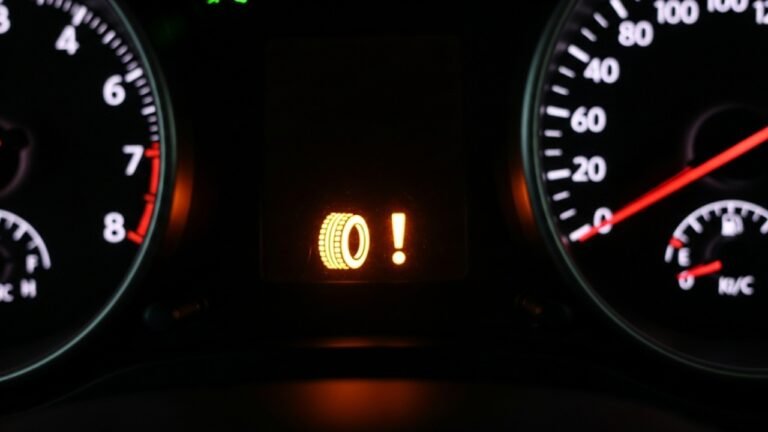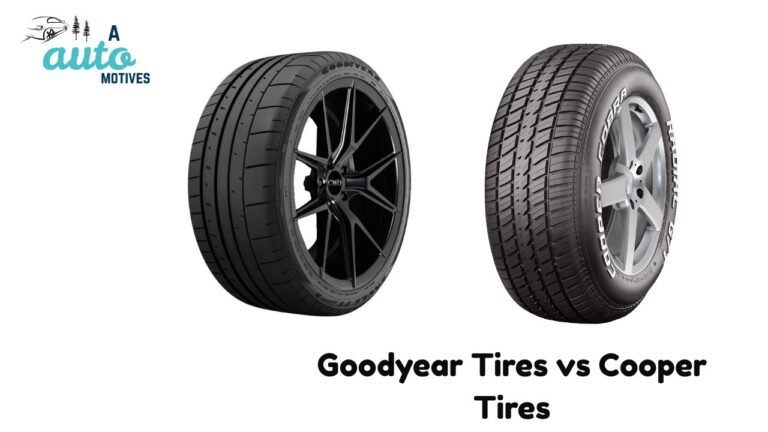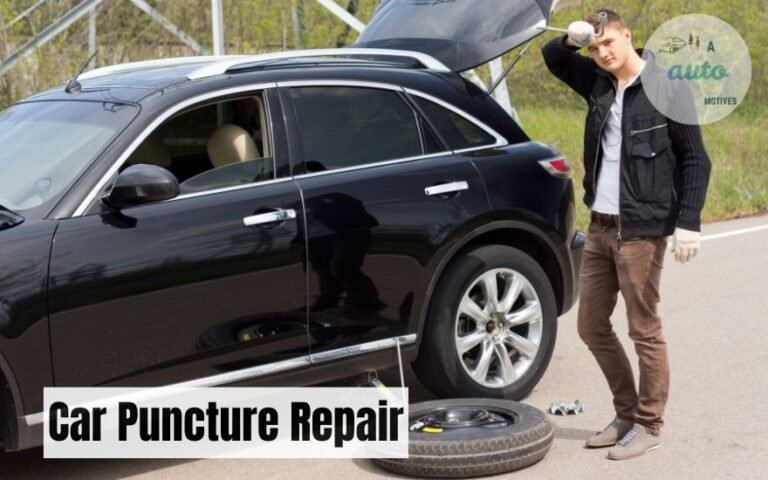How Long Does 4/32 Tire Tread Last?
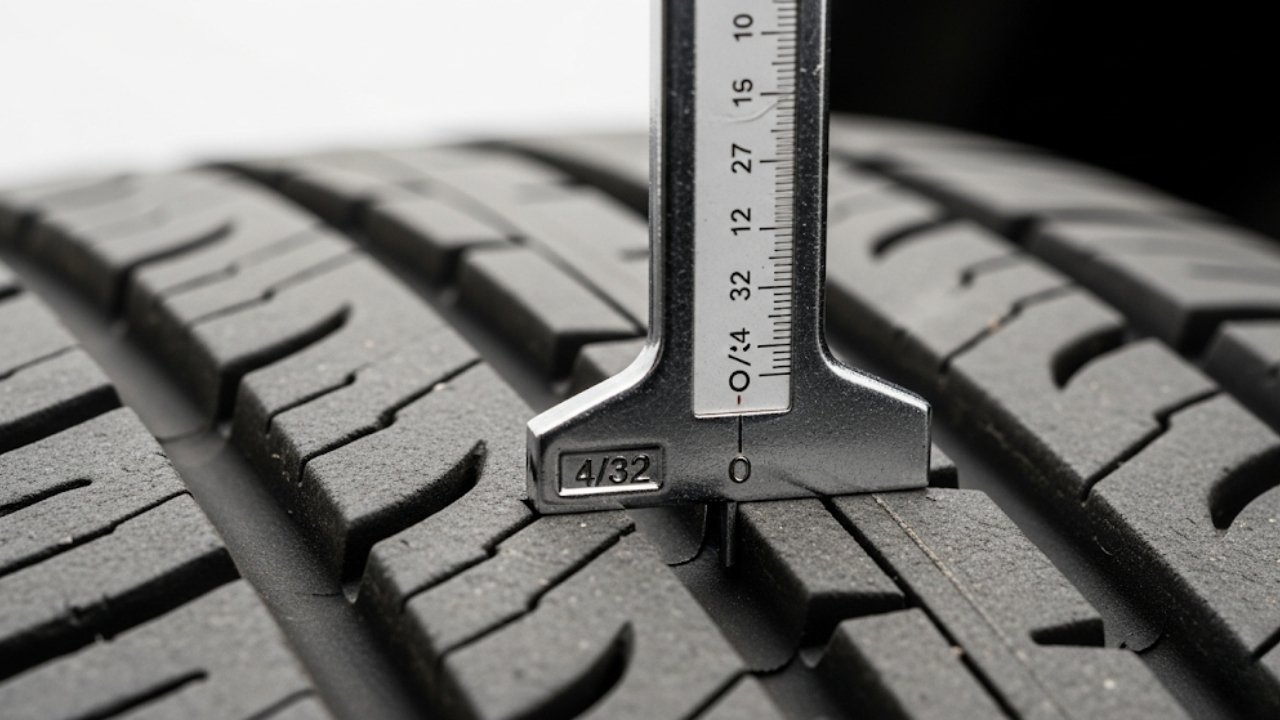
Let me ask you this—have you ever looked down at your tires and thought, “Hmm, 4/32… that sounds okay… right?” I’ve been there too. One morning before a road trip, I checked my tires using a coin, and the tread depth was sitting at 4/32″. Panic? Not quite. Confused? Absolutely.
So, how long does 4/32 tire tread last? The answer depends on a lot of moving parts—literally and figuratively. It’s like asking, “How long can a candle burn?” Depends on the wind, the wax, and how often you light it.
In this guide, we’ll explore exactly what 4/32 tire tread means, how long it can realistically last, and why waiting too long to replace your tires might cost more than just rubber—it might cost safety.
Let’s dig in and talk tread.
What Does 4/32 Tire Tread Mean?
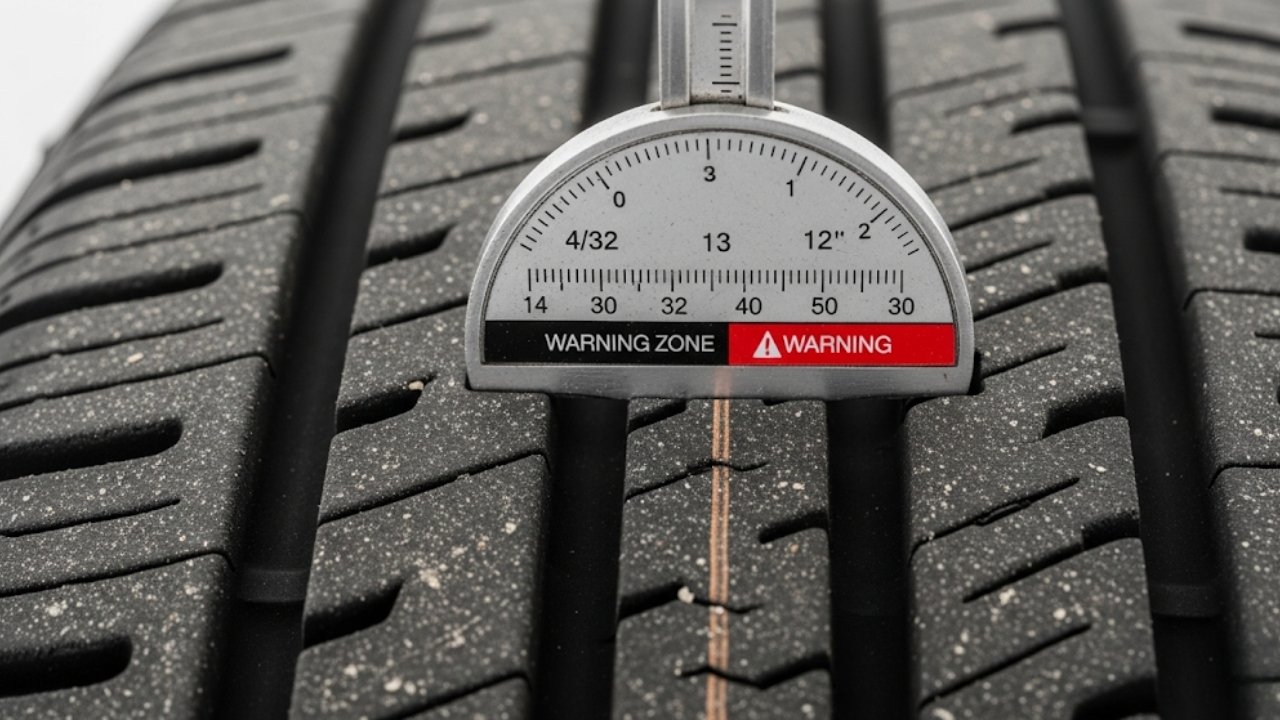
Let’s paint a clearer picture:
| Tread Depth | Description | Performance Impact |
|---|---|---|
| 10/32″ – 11/32″ | Brand new tire tread | Excellent grip & control |
| 6/32″ – 8/32″ | Good condition | Still safe, solid grip |
| 4/32″ | Borderline safe | Limited wet traction |
| 2/32″ | Legal minimum (in most U.S. states) | Dangerous, poor performance |
| 0/32″ | Bald tire | Extremely unsafe |
So when your tire tread hits 4/32″, it’s like when your gas tank light comes on. You’re not empty yet, but you’re on borrowed time.
Is 4/32″ Safe? Let’s Be Real.
This is where it gets real. I once hydroplaned on a rainy day with tires at 4/32″, and it was like driving on banana peels. Technically, they weren’t illegal. But were they safe? Not really.
Here’s why 4/32 tire tread becomes risky:
-
Wet Roads: Water doesn’t drain as easily. Braking takes longer. Skidding becomes easier.
-
Snow/Ice: Forget it. You may as well be skating.
-
Emergency Stops: Your stopping distance increases drastically.
Even Consumer Reports says that stopping distances start to get noticeably longer once you dip below 4/32″, especially in rain.
You don’t need to be a mechanic to know this: the less grip you have, the more dangerous things get.
So, How Long Does 4/32 Tire Tread Last in Miles?
Let’s break it down. The average tire loses about 1/32” every 5,000 to 8,000 miles, depending on conditions.
That means if you’re at 4/32″, and you drive conservatively (no hard braking, no off-roading, good alignment), you might get another 5,000 to 10,000 miles before hitting 2/32″, which is the legal limit in many states.
But remember—that’s an estimate.
Factors that change this number:
-
Driving habits (aggressive driving burns tread faster)
-
Road conditions (potholes, gravel, heat)
-
Tire quality (some premium tires last longer)
-
Vehicle weight (heavier cars = more wear)
-
Alignment & pressure (poor maintenance eats tread)
So, to answer the big question—how long does 4/32 tire tread last? On average, about 5,000 to 10,000 miles, but it could be less if conditions aren’t ideal.
Signs That Your 4/32″ Tire Tread is Nearing the End
Here’s the emotional part—no one wants to fork over hundreds for new tires, especially if they look okay. But there are clear signs that 4/32 tire tread is a goodbye letter waiting to be mailed.
Look out for:
-
Uneven wear – Are your tires more worn on one side?
-
Cracking or dry rot – Tread depth doesn’t matter if the tire is falling apart.
-
Loss of traction – Are you sliding when you brake hard?
-
More road noise – Worn tires get loud.
-
Visual cues – If you can see the top of Lincoln’s head on a penny, it’s time.
Real talk: Don’t wait until your tire tells you it’s done with a blowout on the highway.
What Does It Feel Like Driving on 4/32″ Tires?
Driving on 4/32 tire tread is like wearing sneakers with the soles nearly worn through. You might not notice it on dry pavement, but once it rains or snows, you’ll feel every bit of slip.
I once drove a winding mountain road with tires at 4/32″. Going downhill in drizzle felt like I was tiptoeing on glass. The grip just wasn’t there. It’s a wake-up call you don’t forget.
That said, if you only drive locally and avoid bad weather, you might be okay short-term. But even then, I’d keep it under 50 mph and give yourself extra braking distance.
4/32 Tread and the Seasons: What You Need to Know
Here’s something most folks overlook—seasonal performance changes everything.
Let’s compare:
-
Summer driving? You’re mostly okay—unless it rains.
-
Fall? Wet leaves and cooler temps start to reduce grip.
-
Winter? 4/32″ becomes dangerously low. Snow traction drops off steeply under 6/32”.
-
Spring? Rainstorms and potholes. Again, lower tread means more risk.
Pro tip: If you’re heading into winter with only 4/32″, do yourself a favor and replace your tires. Safety isn’t seasonal, but danger sure is.
Why You Shouldn’t Wait Until 2/32″
Sure, 2/32″ is the legal limit. But legal doesn’t mean safe.
At 2/32”, you might as well be driving on racing slicks. Here’s why you shouldn’t push it:
-
Aquaplaning risk skyrockets
-
Braking distance increases by 30–50%
-
Traction on snow? Basically zero
-
Insurance claims? They could be disputed if tire condition was a factor
It’s like stretching your gas tank when the needle’s on E. Sure, you might make it. But is it worth the risk?
Quick Tips to Make 4/32″ Last a Bit Longer (If You Must)
If you’re not quite ready to buy new tires (we’ve all been there), here are a few tricks to stretch that tread just a little longer—safely.
-
Check your tire pressure weekly
-
Rotate tires every 5,000 miles
-
Avoid sudden stops and starts
-
Keep your alignment in check
-
Drive slower in bad weather
⚠️ Just don’t stretch it too far. No trick replaces the safety of fresh tread.
What Does It Cost to Replace Tires at 4/32″?
Let’s talk money. Replacing tires isn’t cheap—but neither is an accident. When you hit 4/32 tire tread, the clock is ticking. Most drivers hesitate because of the cost. Totally understandable.
Here’s what you’re looking at:
| Tire Type | Price Range (Per Tire) | Lifespan Estimate |
|---|---|---|
| Economy (All-Season) | $80 – $120 | 40,000 – 60,000 miles |
| Mid-Range | $130 – $180 | 60,000 – 75,000 miles |
| Premium/Performance | $200 – $300+ | 70,000 – 90,000+ miles |
Multiply that by four, and you’re looking at $400 to $1,200 for a full set.
But here’s the thing—don’t let cost blind you to value. Replacing worn tires gives you:
-
Better braking performance
-
Safer cornering
-
Improved fuel economy
-
Less road noise
-
Peace of mind when driving in bad weather
Still hesitant? Look for rebates, seasonal sales, and road hazard warranties. Some tire shops even offer buy now, pay later options if you need a little breathing room financially.
When Is the Right Time to Replace a Tire at 4/32″?
Technically, your tire isn’t at the legal minimum yet. But remember this rule of thumb:
If it’s raining, replace at 4/32″. If it’s snowing, replace at 6/32″.
That’s because tread depth affects your tire’s ability to channel water and snow away. The less tread, the less grip.
Still unsure? Ask yourself:
-
Do I drive in the rain often?
-
Will I face snow or ice soon?
-
Am I commuting long distances?
-
Do I carry family, kids, or elderly passengers often?
If you answer yes to any of those, don’t wait.
Trust me—I waited too long once and ended up hydroplaning into a ditch during a storm. The tow bill alone was more than two new tires.
How to Check Tread Depth Yourself
You don’t need fancy tools. Just grab a quarter and do the Washington test:
-
Insert a quarter upside down into the tread groove.
-
If you can see the top of Washington’s head? You’re below 4/32”.
-
If you see hair but not the scalp? You’re right at 4/32”.
-
If his head disappears into the tread? You’ve got life left.
Prefer tech? You can buy a digital tread depth gauge online for $10 to $15. Super handy.
How to Extend Tire Life Before It Hits 4/32″
Maybe you’re reading this in advance and still have 7/32″ or 6/32″ left. Good for you! That gives you time to make the most of your tread. Here’s how:
Practical Tips to Slow Tire Wear
-
Keep tires inflated properly – Check weekly
-
Rotate tires – Every 5,000–7,000 miles
-
Avoid sharp turns or hard braking
-
Balance tires regularly
-
Check suspension and alignment annually
You know how you brush your teeth to avoid cavities? Think of tire maintenance the same way. Small habits prevent big headaches.
My Experience: A Rainy Wake-Up Call
Let me share a quick story.
Two years ago, I was driving home from work during a heavy spring rain. My tires were at 4/32”, but I hadn’t made time to replace them. I figured I had a few weeks left.
Then, while turning on a wet intersection, my car didn’t grip. It slid into the curb. Nothing fatal, thank goodness, but my rim cracked, and I needed a tow. That delay cost me nearly $600.
From then on, I made a promise: replace tires before they get dangerously low. A few hundred bucks for tires beats a wreck or worse.
Bullet Recap: What You Should Know About 4/32″ Tread
Here’s the fast-track version if you’re short on time:
-
4/32″ = borderline safety – Okay on dry roads, risky in rain or snow
-
You’ll get around 5,000–10,000 miles more, at best
-
Legal limit is 2/32”, but don’t wait that long
-
Replace sooner if driving in bad weather
-
Costs for new tires range from $400 to $1,200
-
Check tread using a quarter or digital gauge
-
Rotate, align, and inflate tires regularly to slow wear
FAQs: Your 4/32” Tire Tread Questions Answered
Q1: Is 4/32″ tire tread still legal?
Yes, it’s legal in most states. The legal minimum is 2/32″. But legal doesn’t mean safe, especially in wet or snowy conditions.
Q2: Can I drive long distances on 4/32″?
Only if the weather is dry and your tires are evenly worn. Otherwise, traction and stopping distance will be poor. Plan replacements soon.
Q3: How fast will 4/32″ go down to 2/32″?
It can happen in as little as 5,000 miles, depending on how and where you drive. Aggressive driving or bad roads speed it up.
Q4: Should I replace tires at 4/32″ before winter?
Yes! Winter traction drops off below 6/32”. Replace your tires before snowy or icy conditions hit.
Q5: Is there a difference between 4/32″ on front tires vs. rear tires?
Yes. Front tires wear faster on front-wheel-drive vehicles. If your front tires are at 4/32″, replace or rotate immediately.
Q6: How often should I rotate my tires to avoid early 4/32″ tread?
Every 5,000–7,000 miles. Rotating helps spread wear evenly across all tires, extending their lifespan.
Q7: What happens if I ignore 4/32″ and drive to 0/32″?
You risk blowouts, hydroplaning, poor handling, and possible legal issues in a crash. It’s extremely unsafe.
Q8: Can I sell or donate tires at 4/32″?
Yes, some used tire shops will buy or accept donations if the tread is still even. But many won’t take anything below 5/32″.
Final Thoughts: Better Safe Than Sorry
So, how long does 4/32 tire tread last? Maybe 5,000 to 10,000 miles. But more importantly, how long do you want to gamble with your safety?
Think of your tires like the soles of your shoes. Would you go hiking in slippers? Probably not. So why drive in the rain on almost-bald rubber?
Your tires are the only part of your car that actually touches the road. That connection matters—especially when conditions get rough.
Trust your gut. If you’re asking whether 4/32″ is enough… it probably isn’t.
Invest in new tires. Drive with peace of mind. Your future self will thank you.



